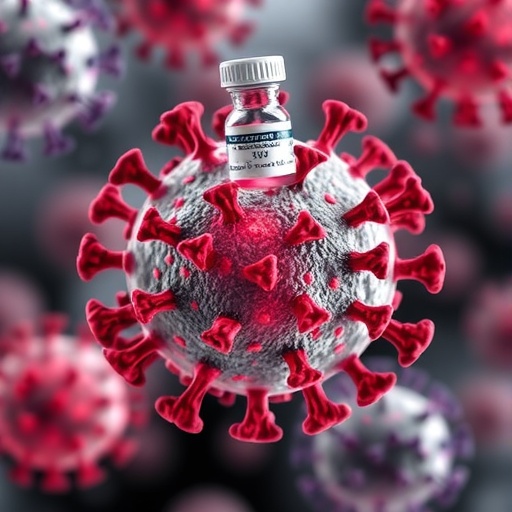Triple-negative breast cancer (TNBC) stands as one of the most formidable challenges in oncological research and clinical management due to its aggressive nature and limited treatment options. Distinguished by the absence of estrogen, progesterone, and HER2 receptor expressions, TNBC comprises approximately 15-20% of all breast cancer diagnoses worldwide. This receptor negativity precludes patients from benefiting from targeted hormonal or HER2-directed therapies, drastically narrowing the therapeutic arsenal and contributing to poorer prognoses compared to other breast cancer subtypes.
The biological heterogeneity of TNBC complicates its classification and treatment further. Unlike hormone receptor-positive breast cancers, TNBC lacks uniform molecular targets, exhibiting a spectrum of genetic and epigenetic aberrations. These variations have propelled researchers to explore detailed genomic and transcriptomic landscapes to identify exploitable vulnerabilities. Recent advances have uncovered distinct molecular subtypes within TNBC, each characterized by unique expression patterns of immune, mesenchymal, and proliferative genes, shedding light on differential responses to emerging therapeutic agents.
Intratumoral heterogeneity also presents a significant barrier. The dynamic cellular ecosystem within TNBC tumors fosters adaptability and drug resistance, challenging conventional treatment paradigms. Cancer stem-like cells, a subpopulation within TNBC tumors, possess enhanced self-renewal and survival capabilities, contributing to relapse and metastasis. Such insights have shifted research focus toward eradicating these resilient cellular niches through novel therapeutics and precision medicine approaches.
Current standard-of-care primarily involves cytotoxic chemotherapy, including anthracyclines and taxanes, which, despite improving survival rates, often yield transient responses and substantial toxicity. The absence of target-specific therapies accentuates the urgency for novel drug candidates and combinatorial regimens that can circumvent resistance mechanisms and minimize adverse effects. Immunotherapy has recently emerged as a beacon of hope in this landscape, harnessing the patient’s immune system to recognize and destroy malignant cells.
Checkpoint inhibitors targeting PD-1/PD-L1 pathways have demonstrated promising efficacy in clinical trials for TNBC, especially when combined with chemotherapy. These agents reinvigorate exhausted T-cells, facilitating sustained anti-tumor immune responses. However, not all patients derive benefit, prompting intense investigation into biomarkers that predict therapeutic response and strategies to modulate the tumor microenvironment favorably.
Beyond immunotherapy, poly (ADP-ribose) polymerase (PARP) inhibitors have revolutionized the treatment of BRCA-mutated TNBC. These agents exploit defective DNA repair pathways by inducing synthetic lethality, effectively killing cancer cells harboring homologous recombination deficiencies. The clinical integration of PARP inhibitors represents a paradigm shift, emphasizing the importance of genetic testing and personalized medicine in optimizing patient outcomes.
Advancements in high-throughput sequencing technologies have revolutionized the understanding of TNBC at a molecular level. Multi-omics approaches integrating genomics, proteomics, and metabolomics have unveiled intricate networks driving tumor progression and resistance. These comprehensive datasets facilitate the identification of novel drug targets and the development of predictive models for treatment stratification, marking a significant step towards precision oncology.
In parallel, the exploration of antibody-drug conjugates (ADCs) offers a new frontier in TNBC therapy. ADCs combine the specificity of monoclonal antibodies with potent cytotoxic agents, delivering targeted cell killing while sparing normal tissue. Early-phase clinical trials report encouraging activity of ADCs targeting surface markers specifically upregulated in TNBC cells, heralding a new class of therapeutics that blend immunotherapy with chemotherapy’s efficacy.
The role of the tumor microenvironment in shaping TNBC progression is now recognized as pivotal. Components such as cancer-associated fibroblasts, immune infiltrates, and extracellular matrix elements dynamically interact with tumor cells, influencing proliferation, invasion, and immune evasion. Therapeutic strategies aimed at remodeling the microenvironment are under active investigation, aiming to diminish tumor-promoting signals and enhance treatment susceptibility.
Nanotechnology-based drug delivery systems are gaining traction in TNBC research, offering solutions to conventional limitations such as poor bioavailability and systemic toxicity. Nanocarriers can be engineered to home in on tumor-specific markers, release payloads in a controlled manner, and overcome biological barriers, thereby enhancing therapeutic indices. Integration of nanomedicine with immunomodulatory and molecularly targeted agents could redefine future therapeutic landscapes.
Emerging data also points to the significant impact of cancer metabolism in TNBC etiology and progression. Aberrant metabolic pathways, including enhanced glycolysis and altered lipid metabolism, support the energetic and biosynthetic demands of rapidly dividing tumor cells. Targeting these metabolic dependencies presents a promising avenue to disrupt tumor growth and sensitize cancer cells to existing treatments.
Preclinical models, such as patient-derived xenografts and organoids, provide invaluable platforms for elucidating TNBC biology and evaluating novel therapies. These models recapitulate human tumor complexity more faithfully than traditional cell lines, enabling more predictive assessments of drug efficacy and resistance mechanisms. The refinement and widespread adoption of such models are expected to accelerate translational efforts.
Despite these advances, significant obstacles remain before realizing the full potential of emerging TNBC therapies. Challenges include overcoming intra- and inter-tumoral heterogeneity, managing toxicity profiles, and ensuring affordable access to cutting-edge treatments globally. Collaborative efforts spanning academia, industry, and clinical disciplines are essential to translate bench discoveries into transformative clinical outcomes.
Early detection strategies tailored to TNBC could markedly improve survival rates, yet biomarker development lags behind. Innovations in liquid biopsy technologies, including circulating tumor DNA and exosome profiling, offer non-invasive means of disease monitoring and early relapse detection. Incorporating these tools into clinical practice could personalize treatment regimens and improve prognostication.
In conclusion, triple-negative breast cancer epitomizes the intersection of complexity and urgency in cancer research. Its distinct molecular features, clinical aggressiveness, and therapeutic challenges galvanize efforts toward innovative interventions. The amalgamation of molecular insights, advanced therapeutics, and precision medicine holds promise for converting TNBC from a devastating diagnosis into a manageable disease, potentially reshaping the future landscape of oncological care.
Subject of Research: Triple-negative breast cancer: biological challenges, molecular advances, and therapeutic developments
Article Title: Triple-negative breast cancer: challenges, advances, and promising therapeutic interventions
Article References:
Sood, D., Kaur, C., Kumar, N. et al. Triple-negative breast cancer: challenges, advances, and promising therapeutic interventions. Med Oncol 42, 506 (2025). https://doi.org/10.1007/s12032-025-03066-9
Image Credits: AI Generated
Tags: cancer stem-like cells in TNBCclinical management of triple-negative breast cancerdrug resistance in TNBCepigenetic aberrations in TNBCgenomic landscape of triple-negative breast cancerintratumoral heterogeneity in breast cancermolecular subtypes of TNBCnew therapies for TNBCprognostic factors in breast cancertargeted therapies for aggressive breast cancertreatment options for triple-negative breast cancertriple-negative breast cancer challenges





